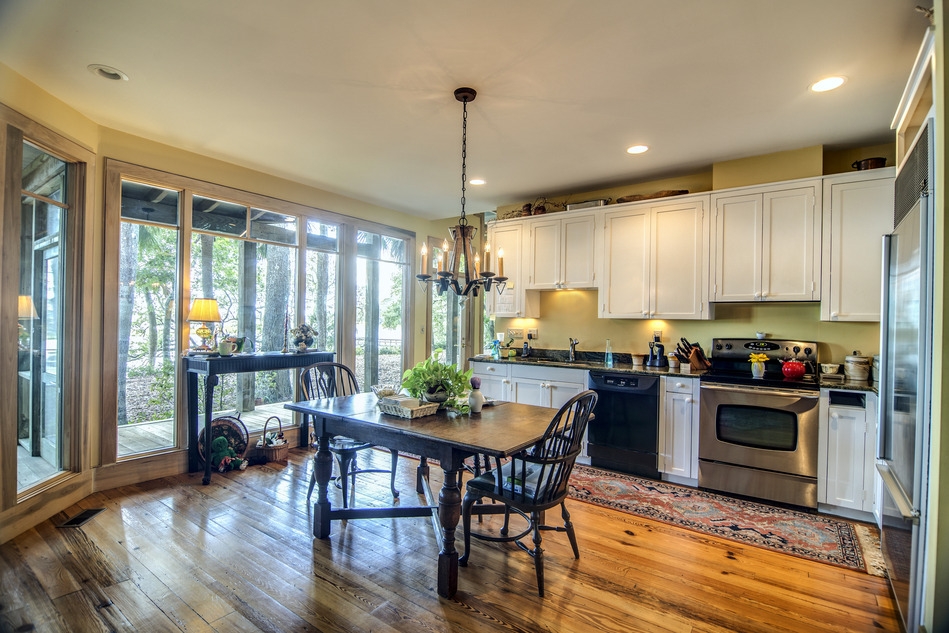Huge, open kitchens continue to grow in popularity, getting bigger and bigger. But is bigger really better?
Houses with cozy eat-in kitchens are common. But enormous kitchens that consume most of a home’s square footage continue to be the trend.
High-end kitchens can top 3,000 sq. ft. and are becoming more and more popular. Even kitchens in mid-level housing are ballooning, swallowing dining rooms, living rooms, even garages.
Here’s the punch line (courtesy of the Wall Street Journal): Many home owners with ginormous kitchens don’t actually cook in them.
Instead they buy ready-made food to eat at home, and use the kitchen for socializing as friends gather and prepare food together.
Some even have smaller kitchens tucked away. These secondary kitchens, often called “wok kitchens,” hide the mess and smells of meal preparation, while creating the illusion of food being prepared in its larger counterpart.
So what’s the point?
Although, I confess, I completely understand large-kitchen lust.
When we designed our Virginia house 15 years ago, our son was a baby and I couldn’t envision him ever growing up. I wanted a space where I could keep an eye on him while I cooked. So we built a 500 sq. ft. kitchen with space for cooking, eating, lounging by the fire, and watching TV.
And it has its advantages:
- The space is an open, delightful place where I cook, work, watch birds at the window — feeder, and feel embraced by a flickering fireplace.
- The baby survived while I cooked, paid bills, attempted to write.
But the list of cons is much longer:
- Noise: It’s impossible to talk on the phone while someone is watching TV, and our 15-year-old dishwasher is running.
- Mess: When I entertain, piles of dirty dishes and utensils attend the party with us. So, I only invite good friends who love my mess and me anyway.
- Diet: It’s hard to fight fat when you work three steps away from the fridge.
- Temperature control: The room is always drafty and hard to heat without the gas fireplace going.
- Family dinners: Rarely do we eat a family meal without the TV blaring some must-see ballgame.
- Unused space: My adjacent dining and living rooms are obsolete dust collectors. I can’t pay guests to take coffee there.
- Teenagers: The baby is now 16, and would rather eat nails than spend time with Mom, no matter how big the space.




